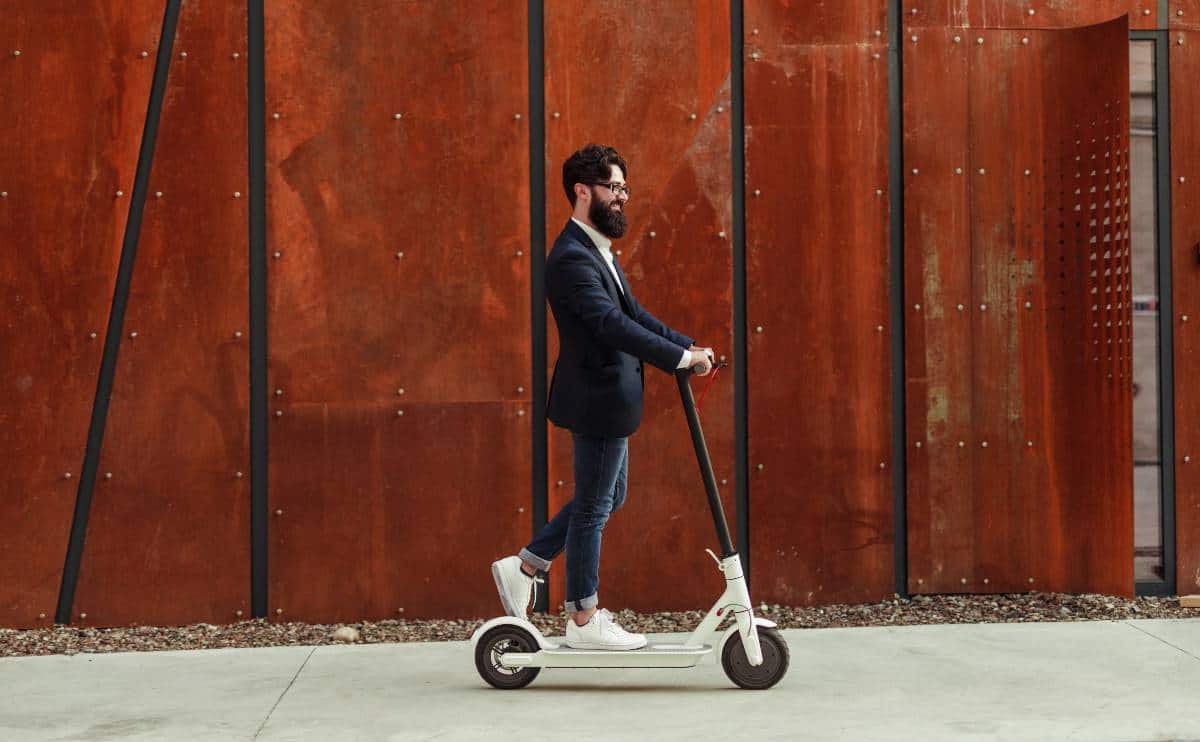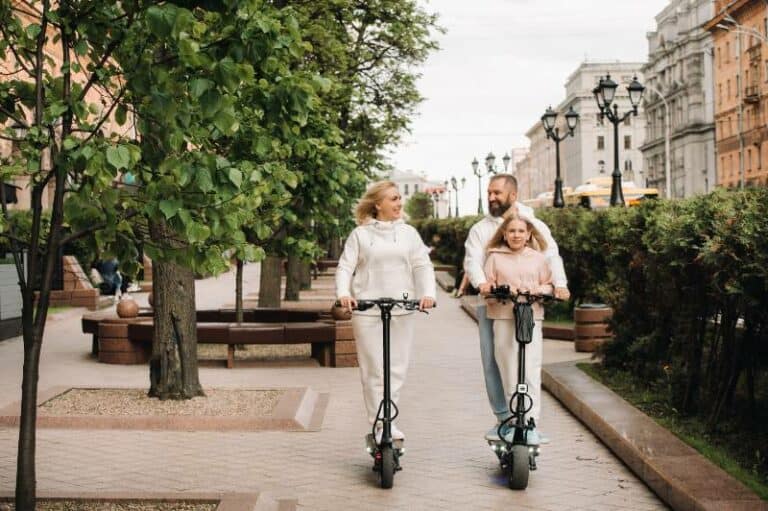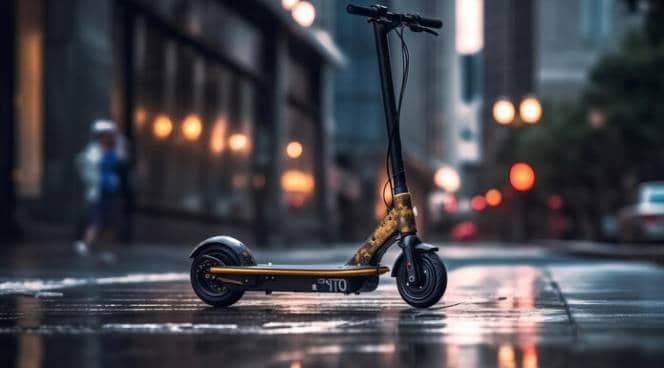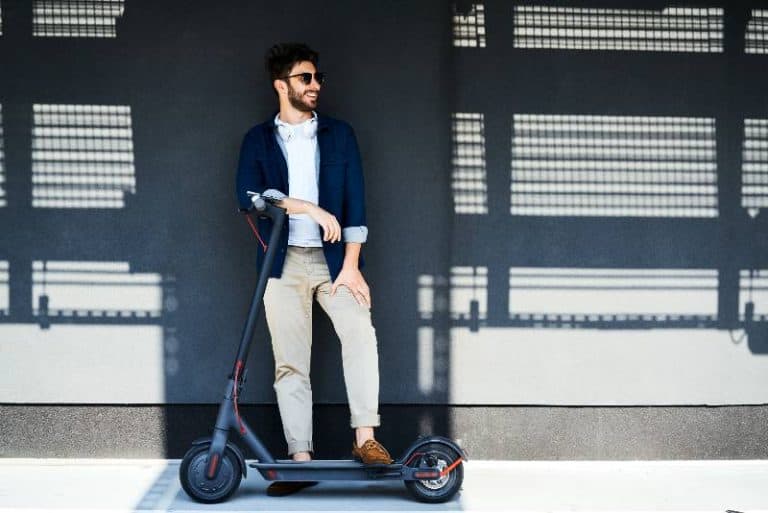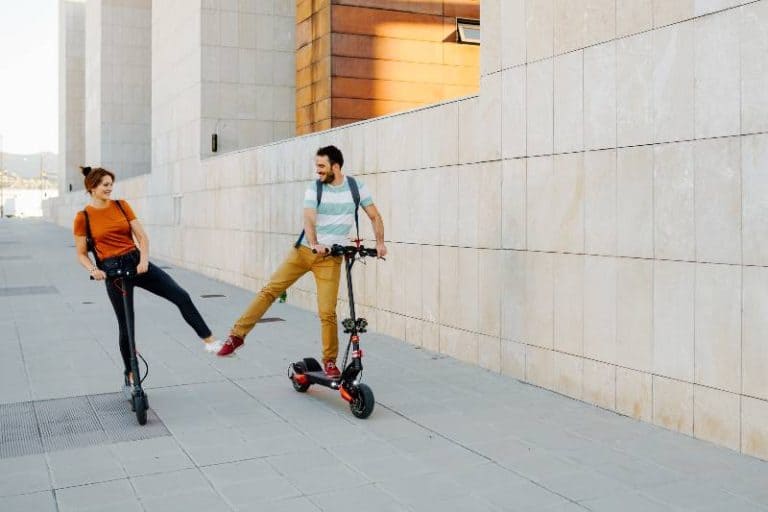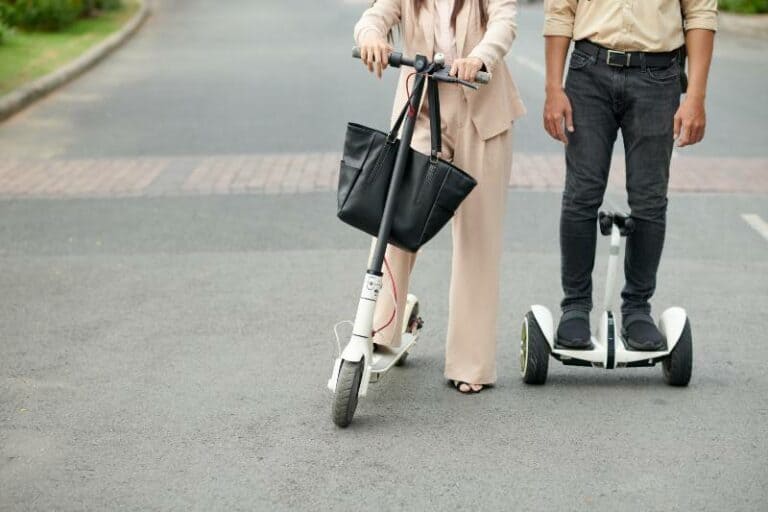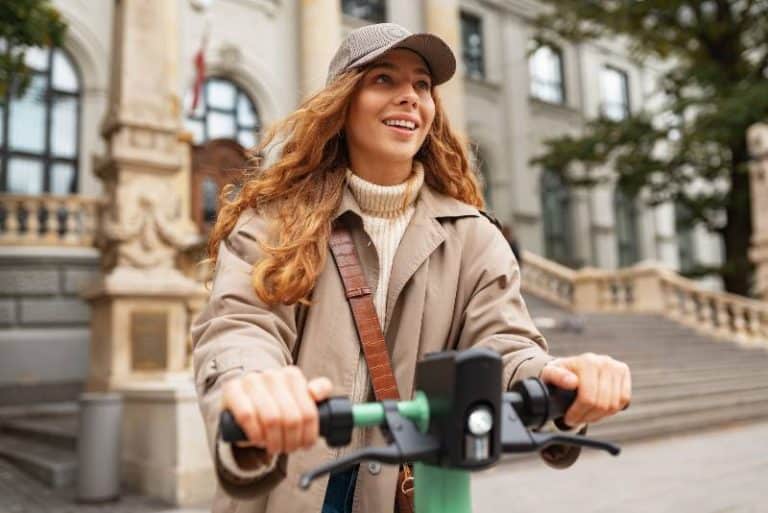E-scooters on Sidewalks: Is It Allowed?
As the founder of a platform promoting electric transport, I’m excited about the potential of e-scooters to reduce carbon emissions from short trips. However, the sudden influx of rentable e-scooters in cities has been chaotic at times. Riders zipping along crowded urban sidewalks led to confusion, injuries, and even some fatalities.
Key Takeaways
- Riding e-scooters on sidewalks poses risks to pedestrian safety, especially for vulnerable groups like the elderly and disabled.
- Cities face challenges balancing the convenience of this new mobility option with responsible regulation to protect sidewalk access.
- Potential solutions range from expanding infrastructure to accommodate e-scooters to using technology like geofencing for better compliance.
Understanding the Impact of Scooters on Sidewalks
Balancing public safety with supporting this sustainable innovation is crucial as communities figure out the way forward. In this piece, we’ll examine the dilemmas around e-scooters on sidewalks and some proposed solutions cities are piloting. My hope is we can build an understanding of this complex issue facing local policymakers and residents alike.
The usage trends behind the tensions over sidewalk riding become more evident when we analyze the data:
- Over 50% of e-scooter trips replace rideshare or car trips, showing the potential mobility benefits.
- Up to 45% of observed riders in some cities use sidewalks at least part of the time, raising pedestrian concerns.
- Elderly and disabled residents face heightened injury risks from scooters on sidewalks with narrow clearance.
Cities have scrambled to update old regulations or craft new ones to address issues like:
- Speed restrictions – some limit speeds to 8 mph on sidewalks versus 15 mph on streets.
- Riding bans – Santa Monica banned sidewalk riding in business districts altogether.
- Parking rules – requirements for upright positioning of parked scooters exist in many cities now.
Addressing Safety Concerns and Guidelines
Safety rightfully remains the key priority as cities determine policies around e-scooters on sidewalks. Some best practices emerging include:
Speed Restrictions and Access Rights
- Enforce lower speed limits of 8-12 mph for scooters on sidewalks through geofencing tech.
- Remove access rights to sidewalks in high foot traffic zones and business districts.
- Ensure right of way for pedestrians, with e-scooters yielding to walkers.
Infrastructure Enhancements
- Designate specific bike lanes or protected micro-mobility lanes for e-scooters.
- Widen sidewalks where possible to create adequate clearance from pedestrian lanes.
- Use signage/markings to indicate areas where sidewalk riding is prohibited.
Incentivizing Responsible Riding
- Levy fines for violations like riding bans in no-ride zones or parking issues.
- Offer credits/discounts for riders taking safety quizzes or tours in apps.
- Make reporting of violations easy through company apps and 3-1-1 municipal systems.
Proposed Solutions for Managing Scooters on Sidewalks
A combination of infrastructure changes, responsible policies, and emerging technology provides paths for cities to allow e-scooters while protecting pedestrian needs and safety.
Dedicated Lanes and Redesigned Roads
Creating distinct, protected lanes on roads for e-scooters and bikes alleviates pressure on sidewalks while offering riders a safer alternative to vehicle traffic. Cities expanding bike lane miles helps pave the way (literally) for micro-mobility integration.
Geofencing and Remote Speed Control
E-scooter companies are rolling out geofence-based software that can automatically limit speeds in designated slow zones or no-ride areas outlined digitally. This allows precision traffic calming tailored to specific blocks.
Improved Rider Accountability
Tying riding privileges directly to individual accounts versus vehicles themselves enables fines and suspensions as accountability tools. Such a permiter also supports rewards for riders demonstrating safe habits over time.

Legal and Safety Measures for E-Scooter Riders
Understanding the laws and regulations for riding e-scooters on sidewalks
When it comes to e-scooters on sidewalks, rules differ across cities. Some allow limited sidewalk access if speeds stay under 6mph. Others restrict business districts entirely. Many fine riders for violations. It’s complex! Educating yourself on local ordinances helps avoid tickets and keep walkways safe.
Tips for responsible e-scooter usage in pedestrian-heavy areas
Even where legal, sidewalk riding requires etiquette. Yielding to passersby, using bike lanes when possible, and parking properly show respect for the communities hosting you. Also, wear a helmet! You never know when a dip or crack might send you flying. Preventing injuries protects riders and pedestrians alike.
Assessing the impact of e-scooter speeds on pedestrian safety
Higher speeds equal higher risks if collisions occur. Limiting rider velocity through geofencing in crowded zones allows safer integration with walker traffic flow. Some cities even incentivize speed limit adherence by offering credits toward future rides. Slowing down can pay off!
Examining the collision risks and accidents involving e-scooters on sidewalks
Multiple factors heighten dangers when scooters mix with pedestrians, especially for seniors and residents with disabilities. Solutions like segmented lanes, proximity sensor alerts, and laser projection guidance aim to prevent incidents. Data analysis also informs infrastructure changes addressing safety gaps proactively.
Insurance and liability considerations for e-scooter riders on sidewalks
Injuries from e-scooter users or tripping over parked scooters spark lawsuits galore against cities and companies. Carrying personal liability coverage as a rider is wise. So is using designated parking zones correctly. Preventing incidents is the ultimate goal across all these measures though.
Urban Planning and Infrastructure for E-Scooter Integration
Designated paths and routes for e-scooter mobility in urban areas
Expanding mileage of protected bike and micro-mobility lanes accommodates scooter passage off of walkways. Sidewalk widening and purpose-built mobility zones also assist segmentation. Clever rerouting coupled with incentives for using preferred trajectories optimizes integration.
Combating congestion and pedestrian discomfort due to e-scooter presence on sidewalks
Between dockless rides and carelessly cast aside vehicles after usage, clutter poses problems. Strategically placed parking hubs, fines for ignoring them, and collection teams help immensely by preventing chaotic, hazardous clogs. The order enables access.
Technological innovations for improved e-scooter navigation and control in pedestrian zones
Geofencing for speed regulation and no-ride boundaries assists. So do proximity alerts between devices warning walkers and riders of each other in busy zones. Sensor-based usage data guides planning as well. Tech both prevents issues and informs long-term solutions.
Community engagement and feedback in developing e-scooter-friendly urban spaces
Co-creation wins over imposition. Opening dialogues via workshops, social channels, and surveys allow residents, especially disabled and elderly ones, to voice their needs in shaping a safer mobility future. Their insights enlighten more inclusive micro-transport advancements for all.
Integrating e-scooter usage into multi-modal transportation networks
Linking scooter subscriptions to mass transit access streamlines journey planning. Providing parking and charging at transit hubs also enables long-haul and last-mile coverage flexibility. Streamlined trips across buses, trains, and stand-up rides assist adoption. Convenience drives usage and higher sustainability over automobiles.
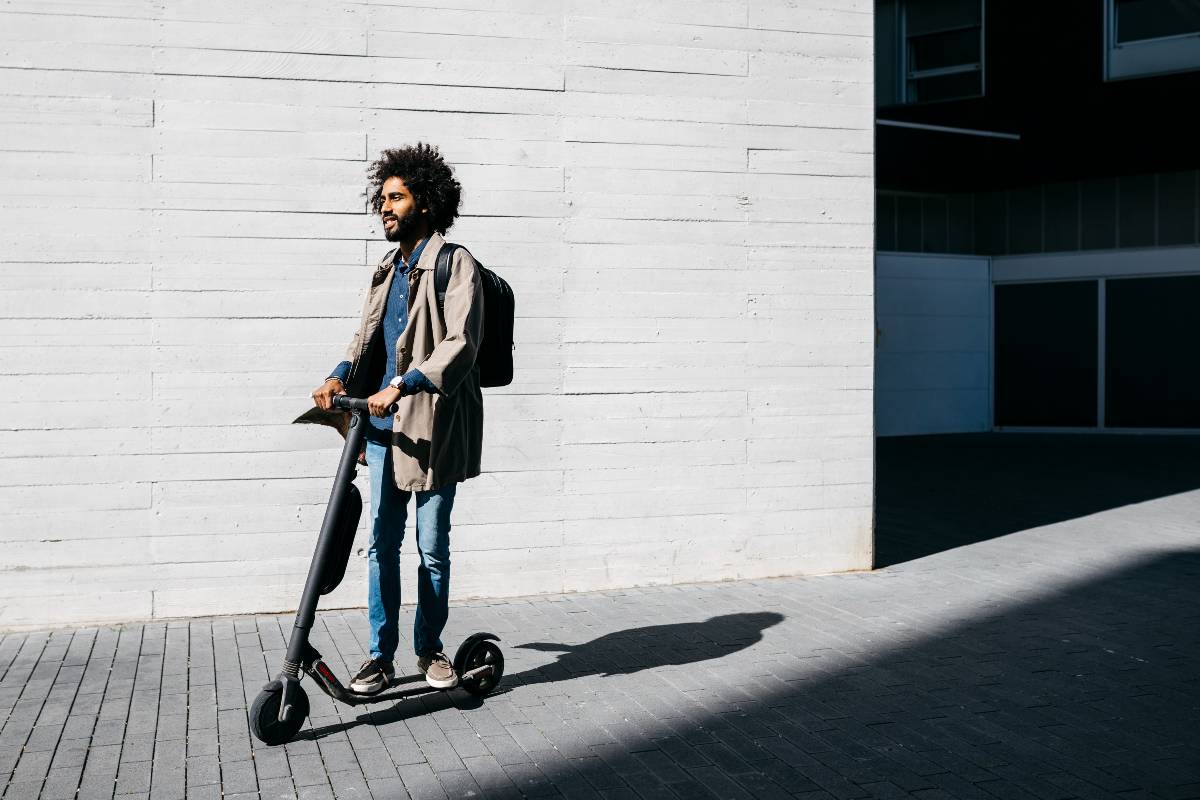
Key Takeaways and Recommendations
Balancing innovation with responsibility remains tricky but important work as cities grapple with integrating e-scooters alongside pedestrians.
Based on cases to date, I recommend policymakers focus on:
- Prioritizing pedestrian safety, especially for vulnerable residents, when crafting regulations.
- Using data-driven evaluation of pilots and proposed changes before broad rollouts
- Supporting purpose-built infrastructure for micro-mobility vehicles via public-private partnerships
As companies and cities work together to collect insights on usage patterns, injury epidemiology, and more, we can create frameworks allowing this sustainable innovation to thrive responsibly.
FAQs
What is the connection between sidewalk riding and e-scooter injuries, as noted by the Insurance Institute for Highway Safety?
The Insurance Institute for Highway Safety has identified that sidewalk riding is associated with a higher risk of e-scooter injuries, particularly due to the potential interactions with pedestrians and other sidewalk users.
How can we prevent sidewalk riders from causing accidents?
Mandating low travel speeds for e-scooters on sidewalks can help prevent accidents and ensure pedestrian safety.
Should electric scooter riders be cautious when entering an “adjacent property” from the sidewalk?
Yes, according to the California Vehicle Code, riders should exercise caution when entering or leaving an “adjacent property” from the sidewalk.
What is the study’s lead author’s opinion on electric scooters on sidewalks?
The study’s lead author suggests that regulating and enforcing lower speeds for scooter on a sidewalk riders should help prevent accidents and ensure pedestrian safety.
Are e-scooters considered motor vehicles?
According to the California Vehicle Code, e-scooters are not considered motor vehicles, but they are subject to specific regulations.
Why are speeds mandated to be lower for e-scooters when riding on the sidewalk?
Mandating lower speeds for e-scooters on sidewalks is aimed at mitigating the risk of accidents and ensuring the safety of pedestrians.
Is it permitted to have privately owned e-scooters on the sidewalk?
A: Privately-owned e-scooters are subject to the same regulations as rental scooters, and are generally not permitted on the sidewalk, except for specific circumstances.
How do speeds on sidewalks compare to those on roads for e-scooters?
Studies have shown that speeds are generally lower on sidewalks than on roads for e-scooters, indicating the need for measures to ensure safe riding in pedestrian areas.
Conclusion
Crafting win-win frameworks supporting micro-mobility integration with pedestrian safety is crucial as e-scooter adoption accelerates globally. The companies behind this transformative transport option must collaborate responsibly with cities to ensure success for all.
At Electrik Living, we’ll continue covering innovations in policy and technology improving regulation and rider accountability on this pressing issue. Subscribe to our newsletter using the form below to receive the latest updates. And reach out with any questions as we advocate together for sustainable, safe streets.
